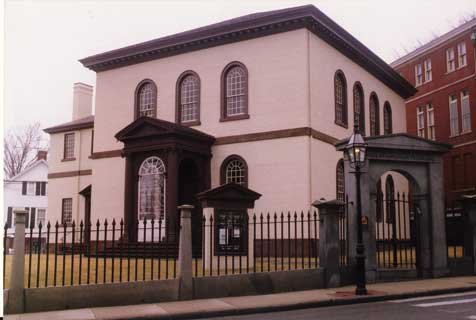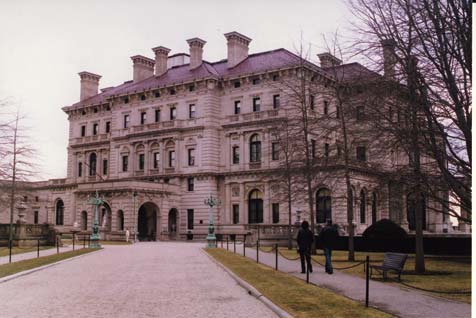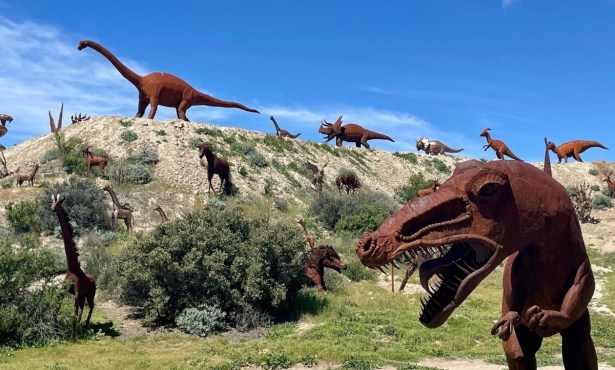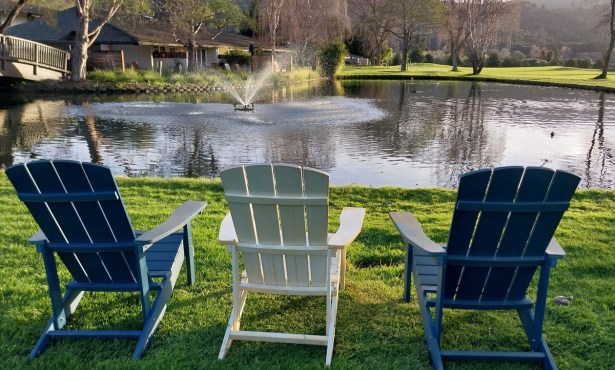Sand, Sun, and Synagogue
A Visit to Newport, Rhode Island

We were 40,000 feet over the Colorado Rockies when the flight attendant announced, “It’s the pilot’s first day!” I had to hope she didn’t mean his first day flying, just his initial jaunt with this company. Nonetheless, when we touched down in Providence, Rhode Island, there was more cabin-applause than usual.
My final destination was 45-minutes south, to Newport, the salty, seaside town famous for its magnificent beach “cottages” (as the weekend mansions built by the Astors, Vanderbilts and their ilk are known), serious yachting history, and paintbox-colored colonial homes dotting the town’s gentle hills. (Newport has more original, still occupied colonial houses than anywhere else in the U.S.) I was there, however, to see a lesser known, but equally notable feature; the Touro Synagogue.
The Touro is the oldest (still-standing) house of Jewish worship in the United States. Dedicated in 1763, the building was designed by the English architect Peter Harrison who was allegedly so joyfully inspired to do it, he charged nothing for his services. The compact and stately chocolate- and cream-colored temple is one of the finest examples of classical Georgian architecture in the country. It sits on Touro Street, boldly angled toward Jerusalem.
In keeping with the Yiddish theme, I checked into a kosher B&B, the Admiral Weaver Inn. As the strict rules of kashrut demand, there are separate ovens for meat and dairy, and a mezuzah in each doorway. I’m not an Orthodox Jew, though, and worried I wouldn’t “qualify” for residence. The innkeeper, Mary Ellen Newbury, dispatched such concerns. “You do not have to be Jewish to stay here.” (Nor work there, apparently. Newbury is a practicing Roman Catholic.)
After a first day breakfast of freshly baked blueberry coffeecake, scrambled eggs, and hot tea (backed by classical music inside and the sounds of seagulls outside) I walked to the synagogue. It isn’t far from the Admiral Weaver, just a 15-minute stroll through the picturesque streets of Newport, with their black-iron street lights, art galleries, boutiques, and restaurants.
The Touro is simple on the outside, ornate on the inside. Its domed ceiling, with five massive brass candelabra (from the 1700s), is supported by 12 Ionic columns representing the tribes of ancient Israel. There’s a clock donated in 1769 that still keeps perfect time, a silver menorah dating back to the dedication of the temple, and a 500-year-old Torah, hand-lettered on deerskin. Under the bimah (raised platform in the middle) is a trap door with a ladder leading to a dirt-floor room.

My third night, I moved to the Admiral Fitzroy, a B&B in the middle of town along Thames Street (pronounced “Tames,” not “Tems” like the London river; intentionally mispronounced to spite the British), a waterside zone full of souvenir shops, the Yachting Restoration School with colorful boats propped up outside, and the marina across the street from which a clear view of the Jamestown Bridge is seen. The Fitzroy building, a former nunnery, has nautical touches around every corner celebrating Admiral Fitzroy, the English Admiral and meteorologist who commanded the H.M.S. Beagle on Charles Darwin’s expedition inspiring the Origin of the Species. My favorite aspects, however, were the glazed tomato-red walls in the entrance, the rooftop terrace, and the buttercream tablecloths in the breakfast room topped with Peruvian lilies.
During the rest of my week, I visited a few other Newport notables, including those extravagant beach houses, most of which were built in the 1800s to early 1900s and served as the part-time homes of wealthy summer residents. They now exist as museums, and are all spectacular; The Elms, Marble House, Beechwood, Rough Point, but if you can only see one, the choice is easy: The Breakers. This 70-room masterpiece, created by Cornelius Vanderbilt, is constructed largely from French and Italian stone, marble, alabaster, and gilded plaster. The tour takes about an hour ($15).
My “The Breakers Plus Ticket ($22) included admission to one other property, so I traveled on to Rosecliff, a white-columned mansion built for Mrs. Hermann Oelrichs, whose father discovered the Comstock Silver Lode in Nevada. Its design catalyst was Louis XIV’s Grand Trianon at Versailles, and the ballroom is the biggest in Newport. You may recognize Rosecliff from the movie The Great Gatsby, which was filmed there.
A terrific view of the front of these American palaces is available from the Cliff Walk, a 3.5-mile footpath running along the Newport coast. The dramatic rock jutting into the sea along this stretch is, according to a local co-stroller, “typical New England ledge, really the bedrock of the region exposed by retreating glaciers. This section of the R.I. coast more resembles the ‘rock bound coast’ for which Maine is famous.” The entrance to the Cliff Walk is just past Easton Beach.
Dining in Newport runs the gamut from the Burrito Shop (‘Rolling ’til 2 a.m.) to sophisticated, upper-end establishments like my evening favorite, the Moors, a romantically-lit, fish and steak house along the waterfront in the building formerly housing the New York Yacht Club. I had an Inside Out Shepard’s Pie ($24), a casserole of toasted pecans, wild mushrooms, sweet potatoes, and perfectly seared scallops. A meal in the middle of a younger, hip and bustling crowd can be had at Scales and Shells on Thames Street. Only seafood is served-fried, grilled, broiled, and raw. For lunch, I loved the restaurant inside the Tennis Hall of Fame, LaForge Casino, an informal, yet refined place where I tried Stuffed Quahog ($4.95), a clamshell filled with sausage, crackers, and crab all topped with bacon, and the Crowley Burger ($9.95), a Dagwood-size sandwich on sourdough. The restaurant overlooks the only grass tennis courts available for public use in the nation.
Before saying Shalom to Newport, I attended a Friday night service at the Touro Synagogue. I kept thinking how this congregation got started, in 1658 when 15 Jewish families arrived on a boat. The then-governor of Newport, Roger Williams, was a radical who’d been kicked out of the Massachusetts Bay Colony for his wild ideas about tolerance, in particular, the fact he made no distinction between members of his own church, of other Christian churches, or even “the outcast sons of Israel,” as he put it.
Of all the pre-Revolution, English colonies, Newport alone offered Jews complete tolerance as a residents, citizens, and worshipers. As I watched the Touro Rabbi, chanting away in a fedora and bright red tie, it reminded me of the bold and individualistic underpinnings of this town. Williams did his own thing, with style, pluck and perseverance; and clearly this spirit lives on.
4•1•1
Touro Synagogue, 85 Touro St. (401) 847-4794.tourosynagogue.org (Open for tours daily, except Saturdays and Jewish holidays)
Admiral Weaver, 28 Weaver St. 1-888-465 0051. newportkosherinn.com
Admiral Fitzroy, 398 Thames St. (866) 848-8780. admiralfitzroy.com
Mansions. (401) 847-1000. NewportMansions.org
The Mooring, Sayer’s Wharf. (401) 846-2260. mooringrestaurant.com
Scales and Shells, 527 Thames St.(401) 846-FISH
International Tennis Hall of Fame, 194 Bellevue Ave. (800) 457-1144. tennisfame.com



